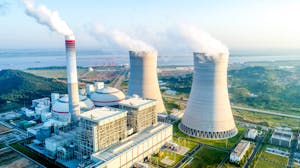
Inflation Reduction Act guide for manufacturers
Inflation Reduction Act guide for manufacturers
What is the Inflation Reduction Act?
The Inflation Reduction Act (IRA) of 2022 includes the largest clean energy incentive effort in U.S. history. Manufacturers can leverage IRA tax credits to save as much as 50% or more on qualifying project costs.
Is the manufacturing industry impacted by IRA?
Yes. There are significant opportunities for manufacturers. Your business may be eligible for IRA tax credits if it:
- Has capital expenditures in infrastructure
- Is building or plans to build something energy-related
- Manufactures “qualifying energy property”
Explore the available credits.
Dedicated IRA resources for manufacturers
45X manufacturing production tax credit (PTC)
Eligible to a wide range of manufacturers, section 45X was created to expand the domestic supply chain of critical components used in advanced energy production. To obtain the credit, manufacturers who produce and sell qualifying products and meet program requirements can claim the credits on their tax returns.
48C investment tax credit
Section 48C Advanced Energy Credit (AEC) is a competitive tax credit program that requires manufacturers to apply to receive an allocation. The current credit, section 48C Advanced Energy Credit, includes $10 billion in new 30% investment tax credits and broadens what is deemed to be eligible energy property a company can invest in to earn the credit.
Domestic content for qualifying energy products
Domestic content impacts any manufacturer producing products used in an energy project that plans to claim tax credits under separate sections 45 and 48 programs. Manufacturers should be aware that a project owner can claim a 10% bonus credit for sourcing products domestically, creating significant project savings.
45X production tax credit
The 45X tax credit can be claimed by manufacturers who produce and sell certain qualifying components for use in advanced energy projects. The majority of qualifying components fall into the following categories.
- Solar energy components
- Wind energy components
- Inverters
- Battery components
- Processing of critical minerals
If you are interested in learning more about the opportunities regarding this credit, click here to get started.
Domestic content
The IRA provides opportunities for entities to implement energy products and claim tax credits on the capital investment or on the production of electricity on an ongoing basis through Dec. 31, 2032.
Domestic content is not a tax credit for manufacturers to claim on the products they sell; however, the program’s requirements will affect manufacturers in the coming years.
Project owners will be seeking to supply key components from domestic suppliers in order to protect the bonus credits allowed to them if they meet the domestic content requirements. Manufacturers are seeking to plan for the future and certify current manufacturing to position themselves for future success.
If you need to learn more about the domestic content program requirements or would like to request assistance in setting up a domestic content certification program, click here to get started.
48C investment tax credit
For companies that plan to invest in additional manufacturing capacity, the 48C tax credit program is an application driven process that can help fund capital costs. The application window follows specific time periods that will be announced in the coming months by the Department of Energy.
What else do I need to know about IRA?
Section 48 and 45 credits
Not to be confused with 48C and 45X, respectively, these tax credits are available to all manufacturers who are implementing or using qualifying energy property to support elements of their operations. If you are planning to deploy or own any of your own equipment under the following categories, you may be eligible for these programs.
Prevailing wage and apprenticeship requirements
Manufacturers should be aware of potential requirements regarding prevailing wage and apprenticeship under certain tax credit programs. The 48C program requires companies receiving funds to comply with the requirements and projects where manufacturers are investing in energy creation that would generate over 1 MW of electric capacity would be subject to the requirements in order to receive tax credit bonuses.
Prevailing wage is a combination of benefits that must be paid to the skilled trades on a project. During the project, the contractors or subcontractors must also adhere to various rules regarding the employment of qualified, registered apprentices.
Latest events

Inflation Reduction Act: What's new and why it matters
The Inflation Reduction Act (IRA) created game-changing opportunities through energy incentives and tax credits. In the year since the IRA was signed into law, there have been significant updates in guidance and regulations.
Inflation Reduction Act: what manufacturers need to know now
Watch this on-demand webinar discussing what manufacturers need to know about the Inflation Reduction Act of 2022. Those that take action now will be better positioned to maximize their credit opportunities.
How to substantiate prevailing wage and apprenticeship to earn the 5X bonus credit
Watch this on-demand recording for the latest updates on how to claim the IRA prevailing wage and apprenticeship (PW&A) bonus credit. Our industry specialists will also provide an overview of our new PW&A compliance portal.














